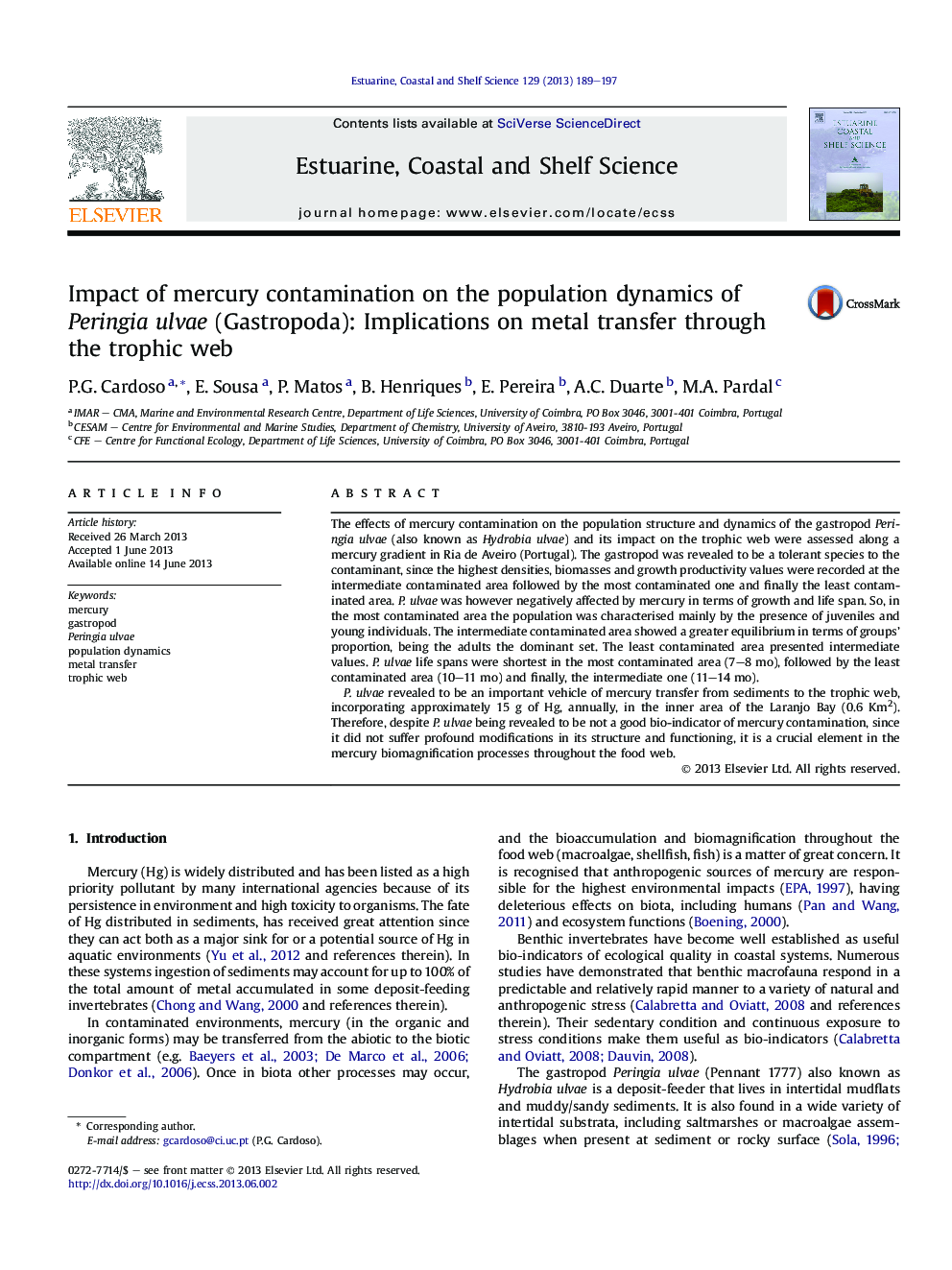| Article ID | Journal | Published Year | Pages | File Type |
|---|---|---|---|---|
| 4539882 | Estuarine, Coastal and Shelf Science | 2013 | 9 Pages |
•Effects of mercury on the population dynamics of Peringia ulvae were assessed.•The gastropod revealed to be a tolerant species to the contaminant.•Highest densities and biomasses were associated to the highest Hg concentrations.•P. ulvae was negatively affected by mercury in terms of growth and life span.•P. ulvae revealed not be a good bio-indicator of mercury contamination.
The effects of mercury contamination on the population structure and dynamics of the gastropod Peringia ulvae (also known as Hydrobia ulvae) and its impact on the trophic web were assessed along a mercury gradient in Ria de Aveiro (Portugal). The gastropod was revealed to be a tolerant species to the contaminant, since the highest densities, biomasses and growth productivity values were recorded at the intermediate contaminated area followed by the most contaminated one and finally the least contaminated area. P. ulvae was however negatively affected by mercury in terms of growth and life span. So, in the most contaminated area the population was characterised mainly by the presence of juveniles and young individuals. The intermediate contaminated area showed a greater equilibrium in terms of groups' proportion, being the adults the dominant set. The least contaminated area presented intermediate values. P. ulvae life spans were shortest in the most contaminated area (7–8 mo), followed by the least contaminated area (10–11 mo) and finally, the intermediate one (11–14 mo).P. ulvae revealed to be an important vehicle of mercury transfer from sediments to the trophic web, incorporating approximately 15 g of Hg, annually, in the inner area of the Laranjo Bay (0.6 Km2). Therefore, despite P. ulvae being revealed to be not a good bio-indicator of mercury contamination, since it did not suffer profound modifications in its structure and functioning, it is a crucial element in the mercury biomagnification processes throughout the food web.
